So, you want to know some Japanese language facts?
Good!
You’ve come to the right place. And no, you won’t learn boring Japanese language facts like… there are 150 million speakers in Japan or it’s the 10th most spoken language online. Yawn.
✅ And if you REALLY want to learn Japanese with complete learning program – 2,000+ audio/video courses, lessons by Japanese teachers, apps, study tools – Sign up at JapanesePod101 (click here) and start learning! I recommend ’em as a teacher & learner.
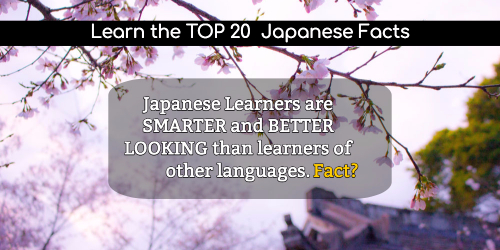
1. Outside of Japan, where is Japanese most spoken?
While there is no concrete data, it comes down to the United States and Brazil. America has a 1,411,188 population of Japanese descent, as of 2015. Brazil has an estimated 1,500,000 Japanese descendants but the real number isn’t known.
We can say Brazil is the winner.

2. Japanese Has 4 Alphabets
Don’t worry. If you’re reading this, you already know one of them.
- Romaji – This is Japanese written with Latin characters – the kind you’re reading now – and you’ll see it quite often.
- Hiragana – Hiragana is considered the official Japanese alphabet. It contains 46 characters. The characters have a somewhat roundish appearance.
- Katakana – This is Hiragana’s brother. Same 46 characters and sounds. It just looks different and is only used for foreign words like “coffee” and when translating your name to Japanese. The characters have more sharp edges. Just take a look below.
- Kanji – Kanji are Chinese characters that have been adopted into Japanese. Why? Well, Kanji make Japanese easier to read.
You can read more about the alphabets and their differences here.
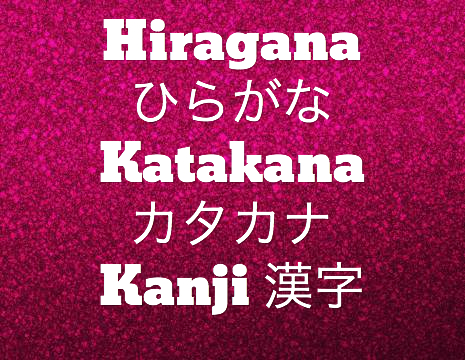
3. Hiragana & Katakana came from Kanji.
What came first, the chicken or the egg? Probably the egg.
In the case of Hiragana, Katakana and Kanji… Kanji definitely came first.
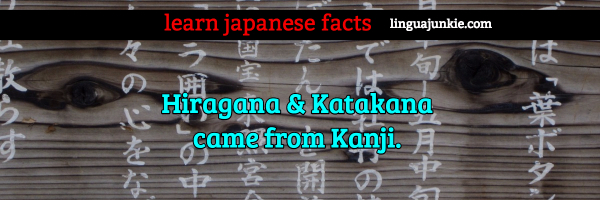
Man’yōgana (万葉仮名) was the first known Japanese alphabet or writing system. And it was purely based on Chinese characters, Kanji.
From there on in, Hiragana and Katakana characters were created based on the Kanji. Take a look and see how the characters came about.
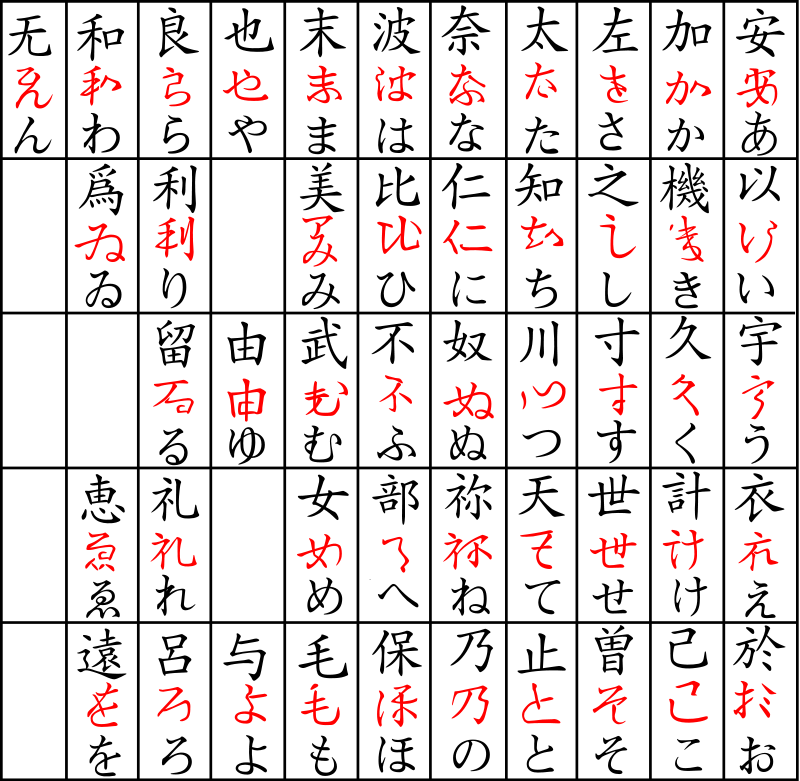
4. So how many Kanji are there?
There are 2,136 kanji deemed necessary for daily use. Japanese people pick up on all of these over the span of their high school education. So, you should know around 2,000.
But wait, there’s more.
The level 1 kanji kentei test (Japanese Kanji Aptitude test) has 6355 kanji. Do the Japanese know them all? Of course not.
Think learning them all is impossible? Well, let’s see the next fact.
5. Only 1 Foreigner Passed The Level 1 Kentei – An American.
USA!
When American Bret Mayer passed the highest level of the Kanji language aptitude exam in Japan, he became the first foreigner “outside of the kanji culture sphere” to be certified in the prestigious exam
Besides perseverance, he also attributed his success to writing the characters to practice and learn. He recalled, “Some people swear by flash cards or spaced repetition apps, but I could never get into it. I need tactile methods, so the most important thing for me is writing practice.”
You can learn more about him here:
6. What languages are related to Japanese? None!
After reading the last bits, you’ll also think Chinese. Nope. Not related though they did borrow the characters.
Another answer you will hear is Korean. While there are some similar words and grammar points (syntax, particles), they are not related.
Japanese is part of the Japonic language family. No other languages are part of this except the Ryukyuan languages – indigenous languages from the Ryuukuu islands of Japan.
So, none really. Japanese stands alone.
7. So, is Japanese hard to learn?
I’ll give you 2 answers here. The cold, factual answer and the feel-good answer.
- The Cold, factual answer: Yes. For an English speaker, it’s quite hard. What are the most troubling parts? Remembering the Kanji and the all the levels of formality and informality that use different verb conjugations. On top of that, there are different counters for different objects. So, you can’t just say “I have 2 pieces of paper or 2 pieces of sushi.” There are 2 different counters for paper, sushi, people, items, animals and the list goes on and on and on. We’re just scraping the surface here. The Defense Language Institute categorizes Japanese as a Category 4 Language. In other words, one of the hardest to learn, along with Chinese, Korean and Arabic.
- The Positive answer: Despite all of that, millions and millions are learning Japanese right now. They’re interested in the language and culture. They truly believe they can learn it. And so they do. They succeed. Don’t believe me? Just google or youtube around and you’ll find tons of learners.
8. Is 1 year enough time to learn Japanese fluently?
No. With the right approach, it is possible to reach a conversational level.
Asking someone “How are you” and giving a taxi driver directions isn’t hard. But, again you need to be practicing the right things in real context.
However, you won’t master the language “fluently” unless you’re some sort of genius.
9. No Articles – A/The
In fact, Japanese natives that learn English struggle with “a” and “the” and when to use them.
10. Verbs are at the end of the sentence.
Imagine listening to a sentence like this:
“My friend and I…. at home… while doing to homework… a blue, frosted, delicious cake… ate.”
Yes? You and your friend? Okay. Homework. Blue? What blue? Oh cake? Get to the point!
Yep, it takes a bit to get to the point.
The good news is that in casual conversation, a lot of words, like pronouns and particles get dropped. Plus, Japanese is spoken fairly fast. So, maybe it won’t take that long.
11. You can write Japanese with Latin characters.
Yes! Just as mentioned above, romaji is indeed one of the Japanese alphabets. So, as long as you know your spelling, you can write in Romaji. For example, coffee is “Koohii.” Japanese people will understand it.
But again, writing and reading sentences with Kanji is a lot more efficient.
12. The Japanese Alphabet – the letters – represent a syllable.
Syllables like ha, he, hu, he, ho. Each of those are letters.
And even “a,” pronunced as “ahh.” That’s a syllable.
Take a look below. Each one counts as a letter and takes up one syllable.
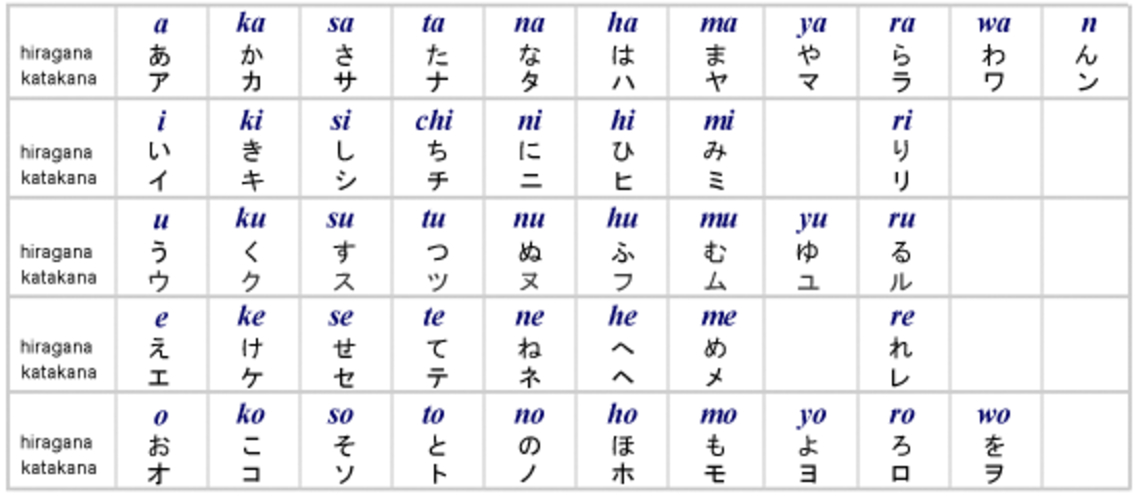
Here’s a simple word – ue/うえ – meaning “top” or “above.” Both, the “e” and the “u” are separate syllables so the word is pronounced as “ooh-eh”
This makes pronunciation easy. And you know what?
This brings us to the next item on the list Japanese language facts.
13. There are only 5 vowel sounds in Japanese and they *never* change.
A, I, U, E, O. No, sometimes Y. There’s no vowel Y here.
They’re pronounced:
- Ah, Ee, Oo, Eh, Oh.
14. Japanese has no genders.
You don’t have to conjugate words. That’s one less headache to think about.
15. Yes, there are different types of Japanese dialects.
What’s a dialect? It’s a particular form of a language which is peculiar to a specific region or social group.
Meaning, it may use different words than the “standard” language. Kind of like American English and Australian English. In American English, a beer is a beer but in Australian, it’s also a tinnie! Major Japanese dialects are:
- Hyojungo – The Tokyo Dialect. This is the standard Japanese that’s taught in schools, used on TV, and the one you will learn. Everyone understands it.
- Osaka/Kansai Ben – spoken in the Kansai region
- Tohoku Ben – (Aomori/Tsuguru Ben – Spoken up in Aomori) The Tohoku-ben is One of the HARDEST dialects to understand. Even Japanese natives will struggle to understand their Tohoku cousins.
- So far, there have been no news of Americans mastering this dialect.
- Hakata Ben – spoken in Fukuoka
- Hiroshima Ben – In the lovely city of Hiroshima, of course
- Hokkaido Ben – Up north in Hokkaido.
16. Japanese Sentences Follow the Subject, Object, Verb Pattern
English has the subject verb object pattern. For example.
- You (subject) eat (verb) apple (object).
- I read a book.
- She walks with her friend.
As you learned earlier, in Japanese, the verb comes last. So, the sentences come out as:
- You apple eat.
- あなたはリンゴを食べます。
- Anata wa ringo wo tabemasu.
- I book read.
- 私は本を読みます。
- Watashi wa hon wo yomimasu.
- She with her friend walks.
- 彼女が友達と歩きます。
- Kanojo ga tomodachi to arukimasu.
What does this mean? It means anyone that tries to directly translate Japanese into English or English into Japanese will a bad time have. I mean, will have a bad time. Don’t do that. Learn the language and speak naturally.
17. Japanese Language is all about context.
You don’t get a clear-cut, obvious statements. You can omit the subject, object, particles and various words and still make sense.
Why? That’s because the the context of the conversation is usually set at the start. As the listener, it’s your duty to fill in the gaps. Here’s an imaginary conversation written in English that may help you understand.
- A: My sister came home from America yesterday.
- B: Really?
- A: But, gained weight.
As you can see, now that we know we’re talking about the sister, we can drop the pronoun “she” in all future sentences.
Okay, what’s next on the list of Japanese language facts?
18. Japanese Language Has 1,200+ Onomatopeia
Onomatopeia are words that represent sounds.
Boom! Bam! Pow! Moo!
Now that we got that out of the way, Japanese has an ocean of onomatopeia that make the language a ton more colorful. Animal sounds aside…
- ぼーぼー (Bo-Bo-) The sound of fire burning
- ころっ・ころり (Koro, Korori) Falling asleep from fatigue
- ざわざわ (Zawazawa) Goosebumps from a bad feeling
- むしゃり (Mushari) Taking one, quick bite
- ぽろぽろ (Poroporo)Tears that won’t stop falling
- どぎまぎ (Dogimagi) Flustered that someone sees right through you
Do you see how subtle and nuanced the meanings are? You’ll be hard pressed to find words, especially, that contain so much in them in English.
See massive list here: https://www.tofugu.com/japanese/japanese-onomatopoeia/
19. Japanese is the fastest spoken language
And you thought Spanish speakers were fast. Japanese natives manage to blurt out 7.84 syllables per second. Spanish is at 7.82.
20. Japanese has the least amount of information per syllable.
You have to talk twice longer in Japanese in order to get the same meaning across… in English.
This is where the speed of the language balances things out.
Sources: http://www.realclearscience.com/blog/2015/06/whats_the_most_efficient_language.html
https://www.tofugu.com/japanese/why-do-japanese-people-talk-so-fast/
Done!
And that’s it! Now, you know 20 Japanese language facts.
Do you know more that deserve to be on this list? Yes?
Leave me a comment with your favorite Japanese language facts.
– The Main Junkie
P.S. I highly recommend this for Japanese learners. If you REALLY want to learn Japanese with effective lessons by real teachers – Sign up for free at JapanesePod101 (click here) and start learning!


